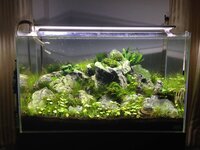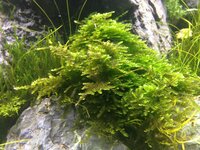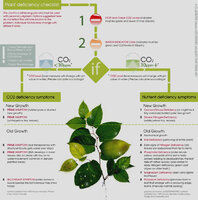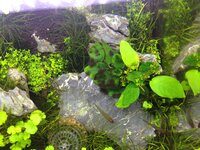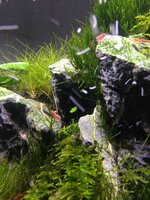FerdinandPorsche
Member
- Joined
- 13 Jan 2014
- Messages
- 83
Hi guys. First time writing a journal here, this is my second attempt on a planted aquarium. Only got to know this remarkable hobby 2 years back, but only managed to start the tank 1 year after reading and preparation. Yet, I still feel the 1 year of reading proves lacking hence the need to read more. I will try to update as often as possible.

The tank data as follows:
2ft ADA 60P
UP-Aqua pro-led-z-20
Eheim 2217 using 12/16mm CADE lily pipes
Intense inline diffuser, bubble counter, check valve and solenoid regulator (3bps)
Hailea HS-28A (~25c)
ADA amazonia soil, ADA 5 elements (re-use from 1st tank)
The tank data as follows:
2ft ADA 60P
UP-Aqua pro-led-z-20
Eheim 2217 using 12/16mm CADE lily pipes
Intense inline diffuser, bubble counter, check valve and solenoid regulator (3bps)
Hailea HS-28A (~25c)
ADA amazonia soil, ADA 5 elements (re-use from 1st tank)


